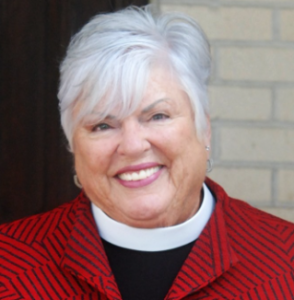Known and Unknown
Just for a moment, imagine a lighted, furnished dining room: I see into the room and you see into the room yet when asked “What do you see?” our responses most often differ. One of us most likely will describe the room, perhaps remarking on the size and shape of it, while the other may talk about how the room feels, same content with different knowing about the room.
Known belongs to me and separately, differently, to you, too. Each of us has our own known, grounded in our experiences, learning, observations, perceptions and thoughts. My known is not your known. I can share parts of my knowing with you and you with me, yet the entirety of my known cannot be transferred to you or anyone else.
Known is more than content or subject matter mastered; and, content informs my known while placing it into a specific group with others who have mastered the same content. Yet, what happens to that content differs from person to person.
The known may limit thinking, ground opinions, and create judgments to which values are attached. And here begins the cataloging, sorting, grouping, predicting, and certainty as in ‘I know this.’ And because I know this, I experience certainty rather than fear, even if that which is known is awful, somehow the knowing is better than the not knowing.
Each of these ways of seeing the room belongs to the individual; some individuals may disagree while some may actually believe only their way of seeing the room exists or is right or is preferred.
Whereas the unknown belongs to all of us, we share equally the unknown. The unknown lacks specifics, descriptors, vocabulary and judgments because boundaries do not exist. With the commonly held unknown, we may imagine but we do not know. Using our imagination, the unknown may cause us to be cautious, to use “what if” statements, to examine the possibilities and to take risks or not. And the not knowing may create fear, a plea for what was and has been because it was simply known, a longing to be sure of boundaries and more comfortable. Remove these boundaries, that comfort, and what might happen?
We don’t know what will happen. We don’t know what it looks like. We don’t know how we’ll feel. We don’t know if it will be good, better, best or bad, worse, worst. We don’t know who will be there. We don’t know for how long. All the usual measures of the known are missing in the unknown, plus we are in unknown together. How can I be sure if I don’t know? How can I be sure of you? Or you of me?
Let’s return to our dining room: now we are standing at the doorway in total darkness and silence peering in. The two of us are asked the same question, “What do you see?” In unison we reply, “Nothing.” We see the same thing, we share the position, and our perceptions are mostly identical because what is in the room is unknown to us. We cannot see into the room and we cannot hear anything coming from the room.
And, now we are commanded to enter the dark, silent room. Whoa…
We hesitate, we talk about maybe yes and maybe no, we wonder about the consequences of not entering the room, we know (or at least think we know) that we’re safer standing where we are. There is no threat to stand at the doorway or to back up a bit. And we are together, we have each other and that is good. We share the unknown of the dark room. We decide we’re afraid to enter, that the risks of what might happen are too great.
We then remember to turn on the lights, and then we enter, together.
So what does all the meandering have to do with our churches, our brothers and sisters, or anything else for that matter? I’m not exactly sure but it seems possible that what I hear of going back to the way it was, what I hear of the ways it used to be, what I hear about the way it was is how we want it to be now – that is a function of our seeing the future as dark and silent. The dark and silent future cannot compare to the bright and shiny past, where the known exists for each of us in our own way and has become the polished and gilded. The past becomes history, honored and revered; but it is history nonetheless.
The desires of many of our churches to add more members, to add more dollars, and to become who we were seem to ignore what Jesus tells his disciples. Jesus’ faith in God led him into and through many dark and silent places. Jesus prayed, wept, spent time with and anguished about those in need. I do not remember reading scripture about his being worried about how many followers he had, or how much money was in their common purse, or how much better it had been for the Israelites before he came onto the scene. He wanted his disciples to follow God’s commands and to spread the Good News.
The chasm between known and unknown may simply require us to become more comfortable in the unknown through our faith in God, and then to remember to turn on the lights.

– The Rev. Mikel Brightman
